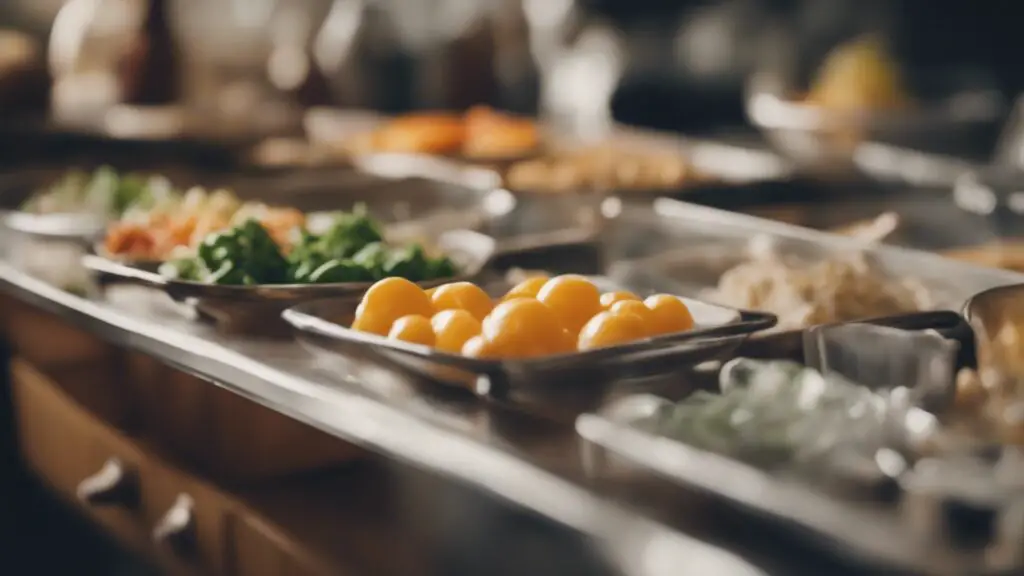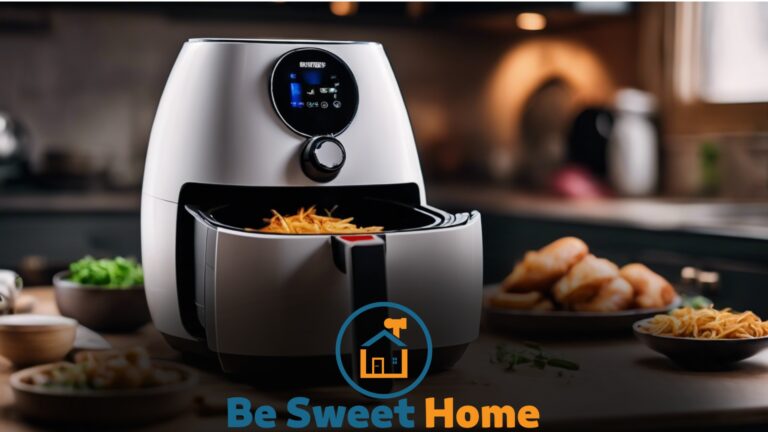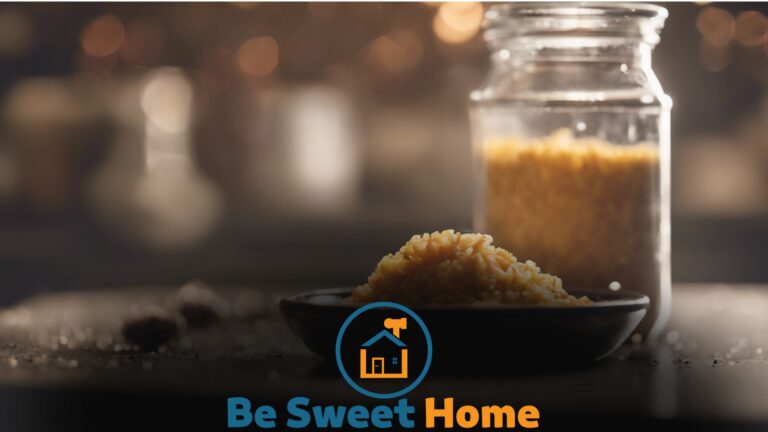

Organizing recipes into categories simplifies meal planning and enhances culinary exploration. It ensures easy accessibility and efficient management of cooking ideas.
Diving into the culinary world becomes smoother when recipes are neatly categorized.
Imagine the ease of navigating through a cookbook with well-labeled sections — it’s simply like having a map for your taste buds.
This systematic approach turns meal preparation into a stress-free activity for food enthusiasts and chefs alike.
It eliminates the hassle of sifting through a cluttered collection of dishes, saving valuable time better spent savoring flavors in the kitchen.
Think of recipe categorization as your kitchen assistant, guiding every culinary venture, whether hunting for that perfect midweek comfort meal or dazzling guests with a show-stopping feast.
This methodical organization sparks creativity and encourages a diverse and balanced diet, inviting cooks of all levels to explore new territories in the gastronomic landscape.
Thus, categorized recipes serve as both a practical tool for meal management and an inspiration for culinary creation.
The Art of Recipe Categorization


Organizing recipes is the heart of an efficient kitchen. It makes meal planning a smooth, pleasant experience.
Imagine a personalized cookbook with every dish at your fingertips, grouped perfectly to meet your needs. This is the beauty of recipe categorization.
Personalizing Your Culinary Blueprint
Creating a culinary blueprint involves tailoring recipe categories to fit your diet and lifestyle.
- Time-saving: Quick access to your favorite recipes.
- Meal prep: Group recipes by ingredients for efficient grocery shopping.
- Diet-specific: Easy distinction between gluten-free, vegan, or keto dishes.
Key Elements in Recipe Classification
Recipe classification requires thoughtful organization.
| Type | Description |
|---|---|
| Cuisine | Group by geographic region or cultural style. |
| Course | Sort by meal type: appetizer, main course, or dessert. |
| Ingredient | Organize by key ingredients for easy reference. |
| Cooking method | Categorize by baking, grilling, or slow-cooking. |
Ease of Access and Time-Saving
Keeping recipes well-organized into categories is like having a neat, digital cookbook.
This method helps cooks and food enthusiasts by making it a breeze to find exactly what they need.
There is no more sifting through piles of books or endless online searches. With everything in its place, choosing and preparing meals becomes faster and more efficient.
Streamlining the Search for the Perfect Dish
Imagine a kitchen where recipes are at your fingertips. Categorizing recipes means less time searching and more time enjoying the cooking process.
It acts like a map in your culinary journey, leading directly to the treasure of a perfect dish.
- Quickly locate your desired cuisine with ethnic or regional sections.
- Find meal-specific recipes like breakfast or dinner with ease.
- Dietary categories help focus on vegan, keto, or gluten-free options.
How Categorization Can Reduce Meal Prep Time
Saving time is crucial in our fast-paced world. Organized recipe categories significantly reduce meal prep time.
You’ll spend less time pondering and more time creating delicious dishes.
- Grouping by ingredient type speeds up grocery shopping.
- Cooking methods group together grilling, baking, or raw recipes.
- Prep-ahead categories streamline batch cooking and meal planning.
With a well-defined system, you can quickly identify recipes that fit your schedule, whether 30-minute meals or slow-cooked feasts.
Enhancing Meal Planning
Organizing recipes into categories does more than tidy up your cookbook. It revolutionizes how you approach meal planning.
You can quickly decide what to cook with well-sorted recipes, saving time and reducing stress during meal prep.
Let’s look at how categorizing your recipes boosts your meal-planning strategy.
Strategic Thinking for Varied Nutrition
When recipes are neatly organized, it’s easier to balance your meals. You can ensure that your diet is nutrient-diverse. Here’s how:
- Create separate categories for protein, carbs, veggies, and fats.
- Plan meals with a balance of these categories in mind.
- Swap recipes between categories to keep meals exciting.
- Avoid repeating the same foods, and keep your plates colorful.
Integrating Categories for Diverse Diets
Recipe categories can mirror different diet preferences. This makes meal planning for mixed-diet households simpler. Here’s a way to integrate diverse diets:
- Label categories by diet type—vegan, keto, or gluten-free.
- Match recipes with each household member’s diet needs.
- Prepare a master list for grocery shopping that includes items from each category.
Cooking Inspiration and Creativity
Turning the kitchen into a playground for flavors is an adventure. Categories organize recipes, making creation easy.
Think of this system as your culinary map. It leads to taste discoveries that thrill the palate.
Let’s explore how grouping dishes sparks inspiration and gets your creative juices flowing.
Discovering New Culinary Combinations
Grouping recipes unlocks a world of flavors—like a chef’s treasure chest. You unearth intriguing pairings.
You blend sweet with savory and tangy with spicy, creating mouthwatering dishes. Categories let you mix and match with ease, inviting bold experimentation.
- Surprise your taste buds with unexpected pairings.
- Build your flavor confidence by experimenting within categories.
- Learn from global cuisines by grouping regional recipes and trying them together.
Categorical Exploration to Ignite the Imagination
Each recipe category is a new canvas for your culinary art. Dive into “Desserts” for sweet magic or “Appetizers” for a snacking fiesta.
Category-led cooking encourages fresh ideas, making meal prep exciting.
| Category | Ideas to Spark Creativity |
|---|---|
| Salads | Combine fruits, nuts, and greens for fresh twists. |
| Casseroles | Layer flavors differently each time for surprises. |
| Slow Cooked | Merge herbs and spices for genial aromas. |
Each category challenges you. It asks, “What’s your next masterpiece?” See categories as buckets of inspiration.
They fuel your cooking journey with countless possibilities, leading to a vibrant, ever-evolving menu that’s uniquely yours.
Sharing and Collaboration Benefits
Categorizing recipes keeps your culinary collection tidy and enhances the joy of sharing and teamwork.
Family and friends can easily exchange their favorite recipes.
You create a food-sharing community together.
Let’s explore how dividing recipes into categories boosts this communal spirit.
Simplifying Recipe Exchange With Family and Friends
Imagine finding that perfect cake recipe with a simple click.
Organizing recipes into categories does just that.
No more sifting through piles of notes.
You send a category link, and they get all the cakes!
Collaborative Category Building
Building categories together can be fun!
Friends add their best dishes to the mix.
You end up with a rich collection.
Think of a virtual potluck where everyone contributes a unique flavor.
Technological Integration
Technological Integration transforms how we manage our culinary lives. Embracing innovation leads to new ways to categorize and access recipes effortlessly.
This seamless approach saves time and inspires creativity in the kitchen. Let’s explore the magic of organizing recipes through the lens of modern technology.
Recipe Apps and Digital Categorization
The digital age has given rise to recipe apps. These apps provide an intuitive platform for managing recipes.
Users can sort their favorite dishes by cuisine, dietary needs, preparation time, or ingredients.
This organization turns meal planning into a breeze. Below are the benefits:
- Easily searchable: Find the perfect recipe with just a few taps.
- Custom categories: Personalize your recipe collection to your taste.
- Sync across devices: Your recipes are accessible anytime, anywhere.
The Future of Recipe Organization
Technology is steadily reshaping recipe organization. Predictive analysis and AI could suggest meals based on past preferences and current pantry items.
Shopping lists might auto-generate from chosen recipes. The potential is vast:
| Feature | Benefit |
|---|---|
| AI Integration | Custom meal plans based on dietary habits |
| Smart Kitchen Compatibility | Recipes synchronized with kitchen appliances |
| Voice-Activated Controls | Hands-free recipe assistance |
This momentum ensures that organizing recipes remains simple and enriching daily. Embrace technology to make every meal an adventure.
Frequently Asked Questions
Why are Recipes Categorized?
Recipes are categorized to enhance user experience by facilitating easy navigation and quick access to desired dishes.
This organization helps users find specific recipes efficiently based on cuisine, meal type, or dietary requirements.
What Are the Categories for Organizing Recipes?
Recipe categories commonly include meal types, cuisine, dietary restrictions, ingredients, and cooking methods.
These help users navigate and select recipes aligned with their preferences or needs.
What Categories Should Be in a Recipe Book?
A recipe book should include categories such as Appetizers, Main Courses, Side Dishes, Desserts, Breads, Soups, Salads, Beverages, Sauces/Dressings, and Breakfast/Brunch.
What is the Best Way to Organize Recipes?
The best way to organize recipes is by using categories or themes such as ingredients, cuisine, meal type, or occasion.
Consider a digital organizing system, like recipe management apps, for easy searching and access. Keep physical recipes in binders with dividers for clear separation.
Why Categorize Recipes?
Organizing recipes into categories simplifies meal planning and improves accessibility, allowing home cooks to efficiently find recipes based on ingredients, cuisine type, or meal occasion.
Conclusion
Organizing recipes into categories simplifies meal planning and boosts kitchen efficiency.
It’s a method that saves time and enhances culinary experiences. Reflect on this strategy to transform your recipe collection into a personalized, easy-to-navigate culinary library.
Embrace categorization for a more joyful and streamlined cooking journey.







